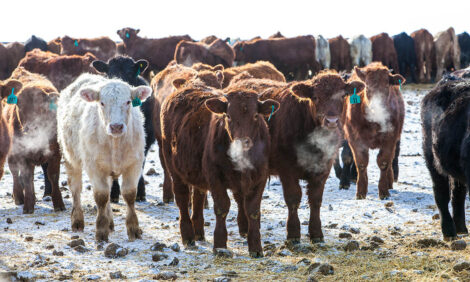



Links Between Feed Efficiency, Diet And Methane Production
Enteric methane (CH4) emissions from ruminant livestock account for ca. 12 per cent of Australia’s total greenhouse gas emissions (DAFF, 2011). CH4 is formed by methanogenic microorganisms present within the animal’s rumen.These perform the beneficial task of removing hydrogen from the rumen and enhancing the breakdown and fermentation of ingested food. CH4 mitigation strategies developed for ruminants need to consider the influence of genetics, diet, rumen microbiology and the degree to which these can be manipulated without compromising rumen function and animal production.
Recently, residual feed intake (RFI) in beef cattle was shown to be linked with reductions in CH4 emissions when animals are grazed on high-quality pasture (Jones et al., 2011).
The aim of the current work was to investigate how ruminant microbial communities are influenced by animal RFI phenotype and diet and to determine whether changes in CH4 production are linked to changes in specific rumen microbial communities.
Rumen microbial communities were investigated using a molecular microbial prfiling technique (terminal restriction fragment length polymorphism; T-RFLP). This technique provides a snapshot of microbial communities without requiring prior knowledge of the microbial species present within the community, emabling changes in community structure associated with dietary or host genetic factors to be screened.
T-RFLP has been successfully used to investigate gut microbiota in other livestock and to establish links with feed efficiency (Torok et al., 2008). In the current study, we investigated rumen microbial communities in high-and low-RFI lines of Angus cows (n = 24 per group) that had been grazed on low dry matter digestibility (550 g/kg) and high dry matter digestibility (810 g/kg) pastures (Jones et al., 2011).
CH4 emissions were determined using the open path Fourier transform infrared spectrophotometer technique (Jones et al., 2011). Rumen fluid (ca. 10 mL) was collected from each animal after six weeks of grazing on the allocated pastures and total nucleic acid was extracted using the method described by Torok et al. (2008). The microbial community structures of bacteria, archaea, methanogens, fungi and protozoa were determined using T-RFLP. Data were validated (Torok et al., 2008) and analysed using multivariate statistical methods (PRIMER-E).
A significant difference (P < 0.05) in CH4 production between high and low RFI cows (0.34 ± 1.017 and 0.46 ± 0.023 g CH4 per kg live weight, respectively) was only observed in cows fed high-quality pasture (Jones et al., 2011). T-RFLP analysis of rumen samples showed that diet significantly (P < 0.05) altered all microbial communities investigated in this study (bacteria, archaea, methanogens, fungi and protozoa), regardless of RFI grouping. RFI phenotype also significantly (P < 0.05) influenced bacterial and fungal communities, irrespective of dietary treatment.
Furthermore, archaeal and methanogenic communities were only significantly different between high and low RFI cows when they were fed a high quality pasture. No significant influence of RFI line on the rumen protozoan community structure was detected. The observed changes in rumen microbiota are related to specific organisms and to changes in the abundance of common organisms. In conclusion, both diet and RFI phenotype influence rumen microbiota, with diet having the greater influence on microbial community structure. However, when cows were fed a high-quality pasture, specific changes in archaeal and methanogenic communities were detected between high and low RFI cows. These data are supportive of the significant methane differences observed between high and low RFI cows grazing high-quality pasture.
The microbial profiling work was funded by the Australian Government’s Climate Change Research Program and Meat & Livestock Australia; the animal experimentation was funded by the Department of Agriculture and Food and the Cattle Industry Compensation Act.
DAFF (2011) Department of Agriculture, Fisheries and Forestry. Emissions reduction http://www. daff.gov.au/climatechange/australias-farming-future/climate-change-and-productivity-research/ emissions_reduction2 (accessed on 11 February 2011).
Jones RM, Phillips FA, Naylor T, Mercer NB (2011) Methane emissions from grazing Angus beef cows selected for divergent residual feed intake. Animal Feed Science and Technology 166, 302–307. Torok VA, Ophel-Keller K, Loo M, Hughes RJ (2008) Application of methods for identifying broiler chicken gut bacterial species linked with increased energy metabolism. Applied and Environmental Microbiology 74, 783–791.


